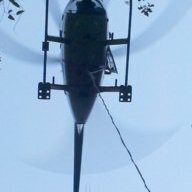Gidday Kogg
I can’t imagine flying the latter stages of a STOL approach in a Savannah VG at 60mph or more, it certainly wouldn’t work for me. I’ve got about 800hrs in mine lots of short strips some down to 120 metres in length and one way.
For the very late stages of such approaches I favour a low speed, high AOA,high drag powered arrival over the threshold with full flap. Right on the left side of power curve….. Attached one is at 35knts IAS to touchdown aircraft is at about 420kg.
I think one thing worth keeping in mind when we discuss indicated speeds on STOL aircraft flying slowly is the huge pitot error at high AOA, what we’re seeing on the dial is a reference point and likely to vary greatly from CAS.
Often you’ll here someone say “my plane stalls at x airspeed blah blah” being some ridiculously low speed. An aerodynamicist would be likely to tell them that just ain’t possible if weight, wing area, and coefficient of lift were plugged in…..
Hence our IAS in STOL ops is a reference point….
Peter
7817BCB2-2971-47F8-AC3B-3F709CD908BC.MOV









